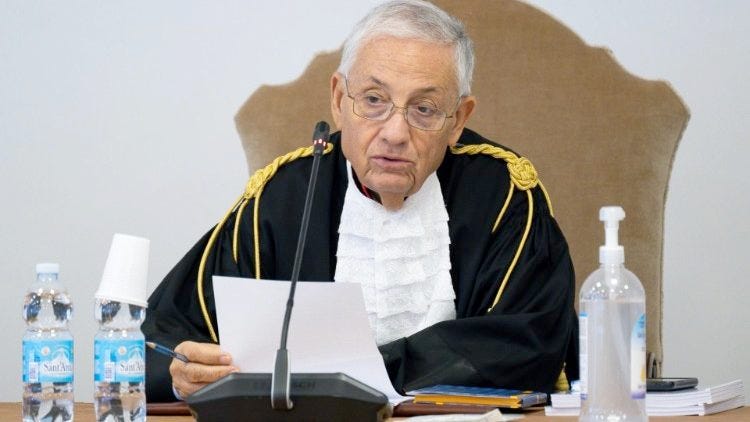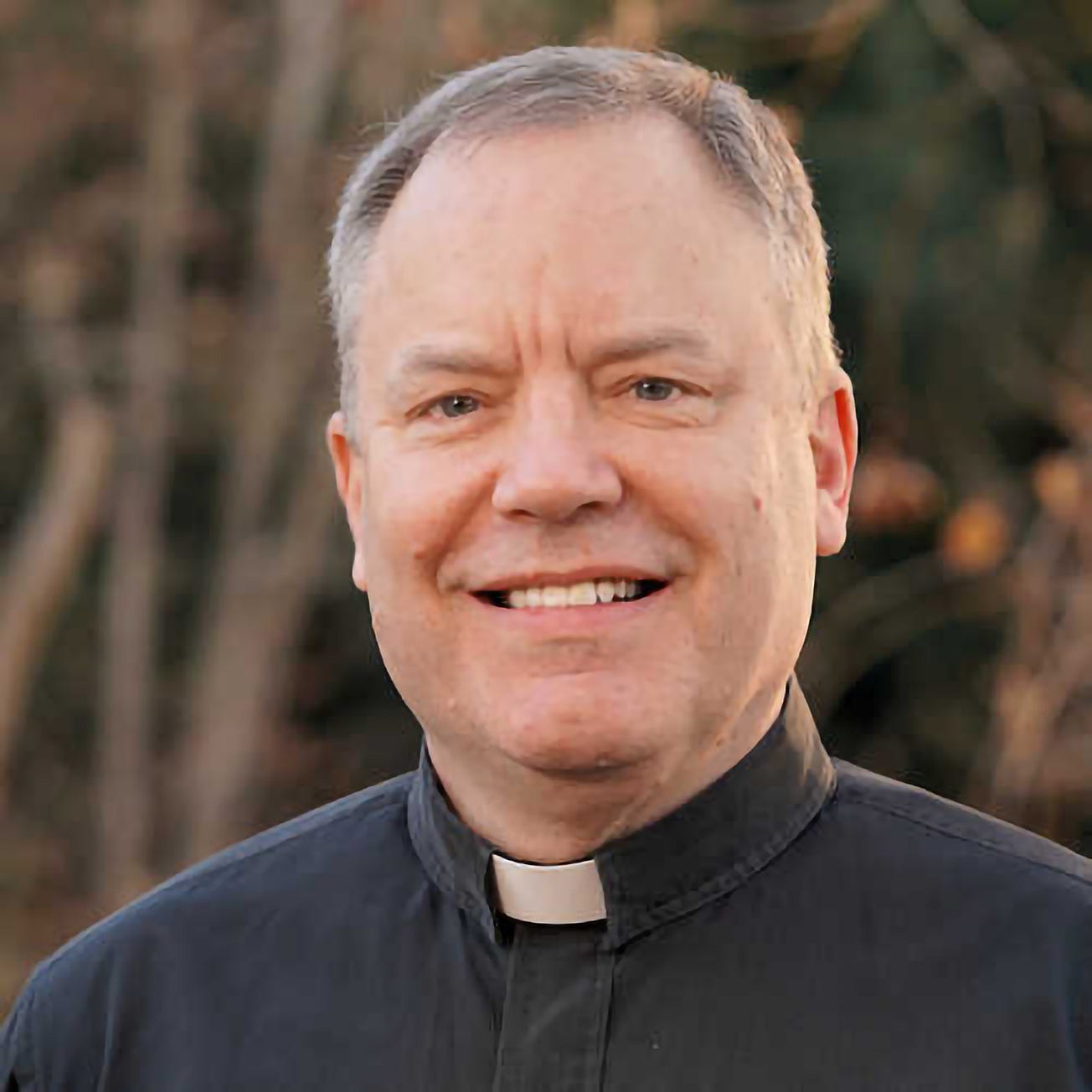Vatican officials approached the Hungarian government this summer to ask whether the Hungarian government might buy out the Vatican’s stake in a troubled Budapest property investment.
The Vatican investment, which dates back nearly a decade, has been the subject of a prolonged court battle, and has raised comparisons with the London property deal currently at the center of a Vatican criminal trial.
During the run-up to a September papal visit to Hungary, the Hungarian government was asked by Vatican officials if it would consider taking over a Vatican bank’s investment in a fund which controls an historic building in the center of Budapest, according to several sources close to the Secretariat of State and to the IOR — the Vatican bank which made a 2013 investment of 17 million euros in the building.
The Hungary investment is one of several Vatican investments now involved in litigation or criminal proceedings. The shakiness of the Holy See's investment portfolios raise questions about the professionalism of long-term investment practices at the Vatican, which Pope Francis has taken several steps to address. But critics say centralized fiscal oversight is still not a reality in the Holy See, with investment managers resisting systematic accountability mechanisms and periodic audits to assess their work.
A source close to the IOR told The Pillar that a plan to approach the Hungarian government about taking over the Vatican’s stake in the building was conceived as a way of finding an investor with an interest in the project.
“The building is not itself an unattractive prospect,” the source said, speaking on condition of anonymity because he was not authorized to speak about the Vatican’s investment.
“It was thought that [the Hungarian government] could be best placed to see its potential.”
The IOR’s investment in the building dates back to 2013, and has been — for years — the subject of a series of lawsuits related to investments made by the IOR in the Futura-Kappa Fund.
The fund was created as a vehicle to invest in an ownership stake in a company that aimed to refurbish and sell the Budapest Exchange Palace, a marquee building in the Hungarian capital.
In 2013, the Vatican bank agreed to make a total investment of 41 million euros in the fund, just weeks before the resignation of Benedict XVI.
After the election of Pope Francis, and a subsequent overhaul of the IOR’s leadership and investment-making policies, the bank revisited its interest in the scheme and, having already delivered 17 million of its agreed investment, withheld the remaining 24 million euros, triggering a still-ongoing legal battle.
A source close to the Secretariat of State confirmed the proposal to the Hungarian government, and said the timing of the approach, just weeks before Francis visited Hungary, was “not exactly deliberate and not exactly coincidental.”
“There was a great deal of mutual conversation at that time. [The proposal] was a very small part of that,” the source said.
At the beginning of September, Pope Francis made his first overseas trip since recovering from surgery in July. The pope visited Slovakia and Hungary, with an itinerary that included the closing Mass for an International Eucharistic Congress in Budapest on Sept. 12.
Francis was only scheduled to spend some hours in Hungary, and it was initially unclear if he would meet with senior representatives of the government at all, or if he would only preside at the Eucharistic Congress’s closing Mass before spending three days touring neighbouring Slovakia. When the schedule was first released, various media outlets speculated that the abbreviated trip was intended as a calculated papal snub to Hungarian president Victor Orban.
While Francis did only spend a single day in Hungary, he also met personally with Orban, in a meeting which both the Hungarian government and the Vatican described as cordial. The investment proposal was not raised or discussed during that meeting, the source close to the Secretariat of State told The Pillar, and it did not play any role in setting the itinerary for the pope’s trip.
“The proposal was made as part of the ordinary discourse between the Holy See and Hungary,” the source said. “It was, perhaps, unusual, but it was received politely and it had no bearing on the Holy Father’s plans to visit Hungary, which was a separate conversation.”
The source close to the IOR told The Pillar that the Vatican has received no official response to its proposal.
“It is an open possibility,” the source said, “nothing has been decided.”
Should the Hungarian government decide to involve itself in the investment, it would be wading into a dispute that dates back nearly a decade.
A sprawling series of lawsuits connected to the fund has seen the bank and several companies registered in Malta and Luxembourg file suit against each other.
The legal dispute between the IOR and several related investment management companies has resulted in a tangle of overlapping lawsuits, with the Vatican bank alleging that its investments were losing money and not being handled appropriately, and fund managers insisting that the IOR was reneging on its contractual obligations.
The IOR’s decision to pull out of the deal followed Pope Francis’ appointment of a new president of the bank’s board of superintendents, Ernst von Freyberg, who was charged in 2013 with cleaning up the bank’s investments and practices after a series of scandals. He was succeeded in 2014 by Jean-Baptise de Franssu. Since that time, the IOR has undergone a series of internal financial reforms aimed at enhancing the bank’s credibility and compliance with international standards.
In the bank’s own lawsuits, the IOR claims that its investment committee was misled by the then-directors of Futura Investment Management, Alberto Matta and Girolamo Stabile, about the terms of the deal, which saw the Futura-Kappa Fund acquire 32 million euro of bad debt owed by the company which owned Budapest building, which Futura-Kappa converted into an 86% ownership stake in the company.
Sources close to the investment told The Pillar that an independent law firm is acting to broker a resolution for both sides, and find investors to assume the IOR’s stake in the fund.
In his recently published “Prison Journal,” Cardinal George Pell, former prefect of the Secretariat for the Economy, created by Pope Francis to oversee the reform of Vatican finances, suggested that a solution to the dispute had been agreed in 2017, but had been spiked without any apparent rationale, leading to the ongoing lawsuits.
In an entry in his diaries dated Dec. 22, 2019, Pell wrote that before he left Rome to return to Australia in 2017, “the IOR authorities had negotiated a settlement of this dispute, which was ready for signature and execution, when this was blocked by the Vatican authorities.”
“This decision was certainly wrong,” Pell wrote, “and was perhaps the result of hypocritical incompetence; but it is hard to shake off the suspicion that the forces of darkness were at work for their nefarious purposes.”
The IOR’s governance is overseen by a cardinals’ commission. In 2017, the president of the commission was Cardinal Pietro Parolin, Vatican Secretary of State. While the Vatican Secretary customarily leads that commission, Pope Francis removed Parolin from the IOR’s board of cardinal overseers in 2019, breaking with long-standing Vatican tradition.
The pope removed Parolin from the oversight board after the emergence of the London property scandal, and with the Secretariat of State under criminal investigation by Vatican prosecutors.
The IOR’s Budapest investment bears a resemblance in passing to the Secretariat of State’s London deal, which led to the indictment of 10 individuals in July, including several former secretariat officials.
Both deals involve Vatican money invested in funds which took major stakes in marquee building developments in European capitals, and both resulted in Vatican departments incurring heavy penalties when they attempted to walk away from their investment managers.
Coincidentally, both Raffaele Mincione, the investment manager through whom the Secretariat of State invested in the London property, and Optimum, the investment company used by the IOR in its stake in the Futura-Kappa fund, were involved in the same Italian banking scandal.
In 2015, Italian authorities found that Banca Popolare di Vincenza had used Optimum to funnel money meant for outside investments back into investment in the bank itself — an effort to circumvent European regulations on maintaining a diversified investment portfolio to avoid risk to the bank.
Italian authorities found that BPV used the same tactic, surreptitiously channeling funds meant for external investment back into itself, through the Athena Global Fund, run by Mincione.




